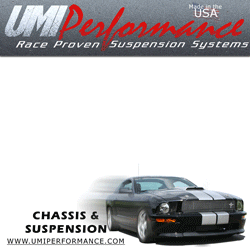Dino Dino Bambino
I have a red car
what part of the stock 3v is most compromised by higher rpm?
A few things:
1. The stock powdered metal I-beam connecting rods are fine in N/A applications and will live up to 7300rpm but when you subject them to the higher cylinder pressures of forced induction, they are liable to bend or break if the engine detonates. You're also limited to ~450rwtq.
2. The relatively small bore limits the valve size and high rpm breathing. Ford already virtually maxed out the valve size on the 3V heads right out of the box. As a result, there's some degree of intake valve shrouding. Porting the heads can overcome that issue.
3. The stock cams were designed to optimize torque output from idle to 4400rpm, with the VCT retarding the cam timing at higher rpm to extend the power band. However power drops off beyond 6200rpm and the primary reason is the very short intake valve opening duration (196* @ 0.050" lift). Just about any aftermarket cam will add higher rpm performance but expect to trade away some torque below 4400rpm.
4. The stock intake manifold (with CMCVs removed) flows pretty well (250-260cfm per runner) but with a runner length of 14", its performance drops off above 6200rpm. The Ford Performance intake manifold has a larger plenum and a runner length of only 9.5", thus improving higher rpm breathing. The trade off is a loss of torque in the 3300-5200rpm midrange.
Since the subject of the thread is area under the torque curve, the first question to ask yourself is in what rpm range do you want to maximize it? The second question is do you want to keep the engine N/A or add forced induction?
Since the stock 3V engine was designed to operate safely from idle to 6500rpm, the most cost effective way to maximize the area under the torque curve in that operating range is to add a positive displacement supercharger kit. You could also add long tube headers but consider them optional rather than necessary, and there's no need to crack the engine open if you limit yourself to ~450rwtq (roughly 8psi maximum boost in a 2.3L supercharger) and 6500rpm.
If you choose natural aspiration, anything over 350rwtq from a stock 4.6L displacement would be outstanding. Most N/A engines with bolt ons & NSR cams (the most popular mods) are in the 320-340rwtq range. Anything higher than ~340rwtq is going to require ported heads and a higher valve lift than you'd get from NSR cams i.e. you'd need to go with VSR or, ideally, SPR cams.
Last edited:


